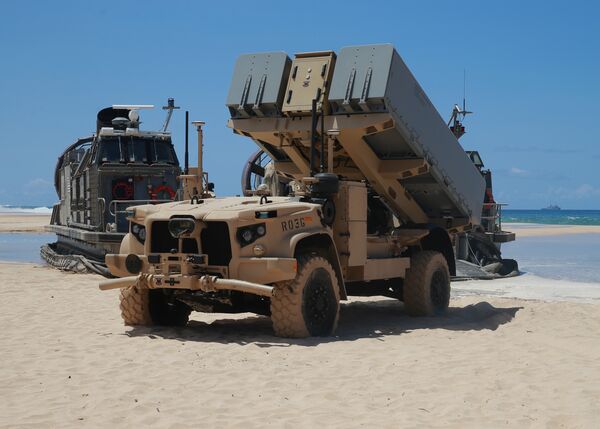
The US Marine Corps' Navy/Marine Corps Expeditionary Ship Interdiction System launcher can be combined with the US Navy's Naval Strike Missile. (US Marine Corps)
The US Navy (USN) and US Marine Corps (USMC) are sharpening Expeditionary Advance Base Operations (EABOs) concepts in the Pacific with existing platforms and units, according to Captain Tom Ogden, commodore of Destroyer Squadron 7 in Singapore.
“The marines are moving fast on it,” Capt Ogden said during an 18 October media roundtable briefing. “They're experimenting, trying to find out what it takes to move small teams around.”
That movement could entail logistics and the need for transportation of fuel, water, or other supplies.
“We're continuing to develop that,” Capt Ogden said, noting the combined-arms ‘Noble Jaguar' exercise in September, where the USN and USMC leveraged integrated command-and-control and joint sensors to expand battlefield awareness, share targeting data, and conduct long-range precision strikes in support of sea control and sea denial in contested and distributed maritime environments.
According to the commodore, certain USN and USMC systems seem well-matched for each other, such as the USMC's Navy/Marine Corps Expeditionary Ship Interdiction System launcher and the USN's Naval Strike Missile, now deployed on the Littoral Combat Ships (LCSs) fleet.
“We share tactics, techniques, and procedures on operations of the missile system,” Capt Ogden said. “We can say, ‘Hey marines, come on LCS and we'll give you a platform to use and learn from before you're outfitted the system'.”
However, he noted that there's a bigger picture set of operational concepts to be ironed out. “How do we operate and support marines? How do the navy and marine corps support each other? How do marines support from EABOs ashore? How does the navy support [those operations]?”
Looking to read the full article?
Gain unlimited access to Janes news and more...



